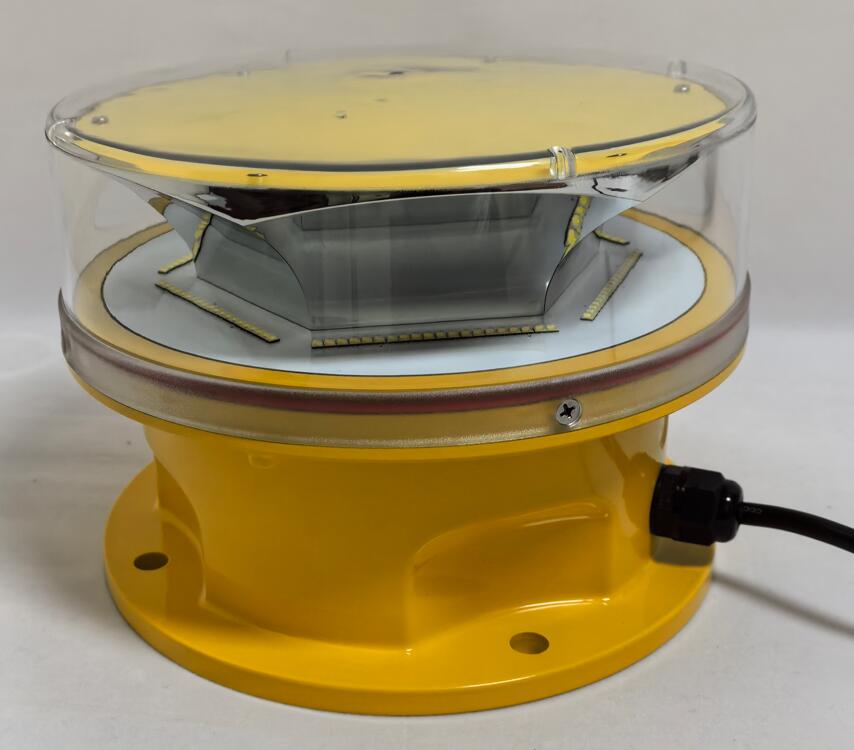Navigating the Night: The Critical Role of Obstruction Lights at Airports
In the complex ecosystem of airport operations, obstruction lights serve as silent sentinels that protect aircraft from ground-based hazards. These specialized lighting systems create a visual language that pilots instinctively understand, marking potential dangers both on the ground and in the approach paths. This article explores the sophisticated world of obstruction lights at airports, examining their technical specifications, operational requirements, and evolving technologies that make modern aviation safer.
The Vital Safety Function of Airport Obstruction Lights
Airport obstruction lights perform several critical safety functions:
Vertical Space Definition: Clearly marking the airspace envelope around runways and taxiways
Hazard Identification: Highlighting structures like control towers, equipment, and terrain features

Approach Path Protection: Safeguarding the critical glide slope areas
These systems are particularly crucial for:
Air traffic control towers
Terminal buildings and jet bridges
| obstruction lights airport |
Equipment and vehicles operating in movement areas
Construction zones within airport boundaries
Natural terrain features near runways
Technical Specifications and Lighting Classes
Modern airport obstruction lighting systems utilize several distinct types:
Low-Intensity Obstruction Lights (L-810)
Used for structures under 45 meters
Steady-burning red lamps
Typically installed on equipment and vehicles
| obstruction light airport |
Medium-Intensity Obstruction Lights (L-864)
For structures between 45-150 meters
Dual-mode (red/white) capability
Flash rates between 20-60 flashes per minute
High-Intensity Obstruction Lights (L-856)
For structures exceeding 150 meters
White flashing lights visible up to 20 nautical miles
Synchronized flash patterns across multiple units
Strategic Placement and Configuration
Effective airport obstruction lighting requires careful planning:
Vertical Marking Systems
Tiered lighting on tall structures
Spacing intervals based on structure height
Color-coded levels for quick identification
Horizontal Perimeter Lighting
Defining airfield boundaries
Marking equipment storage areas
Identifying construction zones
Approach Path Protection
Glide slope preservation lights
Runway end identifier systems
Precision obstacle free zone (POFZ) markers
Innovations in Airport Obstruction Lighting
The field has seen significant technological advancements:
Smart Lighting Systems
Automatic intensity adjustment based on visibility conditions
Remote monitoring and control capabilities
Predictive maintenance features
Energy-Efficient Solutions
Advanced LED technologies
Solar-powered units for remote locations
Self-diagnosing power systems
Enhanced Visibility Features
Omnidirectional lens designs
Anti-glare configurations
Weather-resistant coatings
Regulatory Framework and Compliance
Airport obstruction lights must meet strict international standards:
ICAO Annex 14: Defines light intensity, color, and flash characteristics
FAA AC 150/5345-43J: Specifies US airport lighting requirements
EASA CS-ADR-DSN: European aviation safety standards
IEC 61820: International electrotechnical standards
Key compliance considerations include:
Photometric performance requirements
Environmental durability testing
Power supply reliability standards
Maintenance and inspection protocols
Operational Challenges and Solutions
Implementing effective obstruction lighting presents unique challenges:
Environmental Factors
Mitigating bird attraction to lights
Reducing light pollution in surrounding communities
Withstanding extreme weather conditions
Technical Considerations
Preventing radio frequency interference
Ensuring compatibility with night vision systems
Maintaining visibility during precipitation
Operational Management
Coordinating with air traffic control systems
Integrating with other airport lighting
Managing temporary installations during construction
Case Studies: Global Best Practices
Singapore Changi Airport
Innovative use of low-profile lighting on terminal buildings
Advanced monitoring systems for all obstruction lights
Denver International Airport
Specialized lighting for high-altitude operations
Unique solutions for extreme weather conditions
London Heathrow
Sophisticated approach lighting systems
Careful light pollution mitigation measures
Future Trends and Developments
The airport obstruction lighting industry is evolving rapidly:
Integration with Digital Systems
Connection to airport digital twins
Augmented reality visualization tools
Automated NOTAM generation
Advanced Materials
Self-cleaning lens coatings
Impact-resistant composite housings
Thermally efficient designs
Sustainability Initiatives
Reduced energy consumption designs
Recyclable component systems
Wildlife-friendly lighting spectrums
Obstruction lights at airports form an essential, though often unnoticed, layer of aviation safety infrastructure. As airports become more complex and air traffic increases, these lighting systems will continue to play a vital role in preventing ground-to-air collisions and ensuring smooth operations. The ongoing technological evolution - from basic illumination to smart, connected systems - demonstrates the industry's commitment to enhancing safety while addressing environmental and operational challenges.
Looking ahead, the integration of obstruction lights with digital airport ecosystems and sustainable technologies promises to create even more effective safety solutions. These advancements will ensure that as aviation continues to grow, the fundamental safety provided by properly implemented obstruction lighting remains steadfast - guiding aircraft safely through the increasingly crowded skies and complex airport environments of the 21st century.
